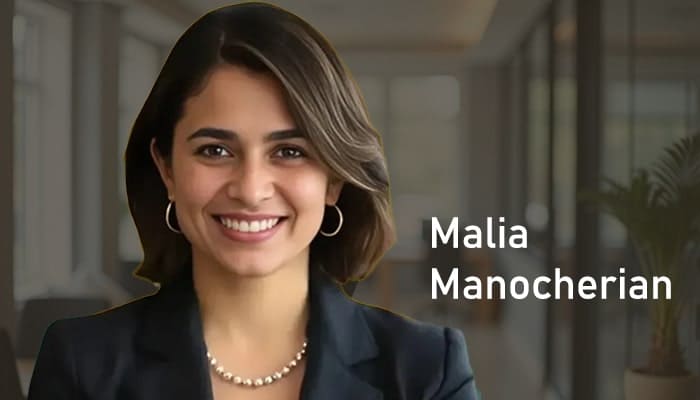Malia Manocherian is not your typical real estate figure. While her family name is known in New York’s development scene, she has carved her own path—one that fuses architecture, wellness, and social good into a singular mission. Her work is less about making noise and more about making a difference. This article explores her story, impact, and the approach that’s making her a quiet force in the industry.
A Purpose-Driven Legacy
Coming from a family with deep roots in real estate, Malia could have followed a well-paved path. Instead, she chose to redefine it.
She focused early on education, policy, and grassroots involvement. This foundation helped her understand that real estate doesn’t just shape skylines—it shapes lives. Her method? Develop spaces that not only serve a purpose but also nourish the people living and working in them.
Her core belief: cities should heal—not harm.
What Sets Her Apart
Malia’s work stands on four main principles that go far beyond typical development strategies:
-
Sustainability at the core
Her projects prioritize renewable materials, energy efficiency, reduced emissions, and green building certifications. -
Well-being-first design
She integrates natural light, plant life, filtered air systems, quiet zones, and wellness-centered layouts. -
Human connection
Communal spaces, event hosting areas, and inclusive design encourage interaction and reduce urban loneliness. -
Technology with soul
Smart tech is used to improve health and accessibility—not to replace human touch.
Key Elements Found in Her Developments
| Feature | Description | Value to Residents |
|---|---|---|
| Biophilic design | Use of natural elements like plants, wood, and light | Reduces stress, enhances sleep, improves mental clarity |
| Air and sound quality systems | Advanced filtration and insulation to protect from pollution and noise | Better respiratory health and peace of mind |
| Wellness amenities | Meditation studios, fitness areas, and green rooftops | Promotes active, balanced lifestyles |
| Community-first spaces | Common areas for events, education, or local vendor markets | Builds stronger neighbor-to-neighbor relationships |
More Than Real Estate: A Broader Mission
Malia’s impact doesn’t end with buildings. She channels resources into causes aligned with her values:
Education
-
Offers scholarships and mentorship programs
-
Supports schools in underserved neighborhoods
-
Develops learning centers tied to her projects
Mental Health
-
Funds access to therapy for youth and families
-
Supports nonprofit clinics and awareness campaigns
-
Builds trauma-informed design into housing projects
Social Justice
-
Partners with advocacy groups on human rights
-
Supports women’s safety, anti-violence efforts, and inclusion
-
Invests in civic education and policy reform
She treats philanthropy like long-term planning: thoughtful, data-driven, and rooted in results.
How She Leads
Malia is not a typical executive. Her leadership style reflects emotional intelligence, innovation, and collaboration:
-
Inclusive teams
She brings together planners, designers, mental health experts, and technologists to build smarter communities. -
Open feedback culture
Every project includes listening sessions with stakeholders—tenants, neighbors, city officials, even artists. -
Long-term vision
She doesn’t chase trends. Her focus is on resilience—buildings that last, support systems that endure, and policies that evolve with time.
Staying Out of the Spotlight
While many in her position seek attention, Malia prefers a lower profile. Her work speaks louder than press releases ever could.
-
She declines speaking circuits and public brand partnerships
-
She avoids turning charity into marketing
-
She quietly funds innovation through grants and fellowships
Her inner circle describes her as focused, principled, and deeply committed to doing the work, not just talking about it.
Real Impact, Not Just Ideas
What makes Malia Manocherian stand out isn’t just her beliefs—it’s how she puts them into action. Here’s what sets her model apart in the industry:
-
People-first planning
Every structure is designed with end users in mind: their well-being, their environment, their community. -
Sustainability as a system
It’s not about isolated features, but a complete approach—energy, waste, water, air, biodiversity, and access. -
Philanthropy with structure
Donations are backed by metrics and long-term planning—not one-off gestures. -
Innovation with heart
Whether using smart technology or immersive design, her focus remains on helping people live better lives.
My Perspective on Her Approach
Having studied leaders across real estate and philanthropy, Malia’s model feels rare—but replicable. It offers lessons others can follow:
-
You don’t need noise to create impact
Quiet leadership can produce loud results, especially when rooted in deep listening and steady action. -
Spaces matter more than people realize
Air, light, connection, green space—all these shape our health and happiness. -
Doing good can align with doing well
Profit and purpose are not enemies. With the right structure, they reinforce each other. -
Real estate can be restorative
When done right, a building can be more than a place to live. It can be a place to grow.
Final Thoughts
Malia Manocherian may not chase the spotlight, but her work is a beacon for a new kind of development—one that prioritizes people, planet, and purpose in equal measure. She’s a quiet innovator, showing what’s possible when real estate is treated as a public good, not just private opportunity.
Her approach blends innovation, empathy, and sustainability to create not just better buildings—but better communities.
Disclaimer
This article is intended for informational purposes only. It is based on publicly available information and personal interpretation as of July 2025. No private sources or interviews were used. The content does not offer legal, financial, or professional advice.
